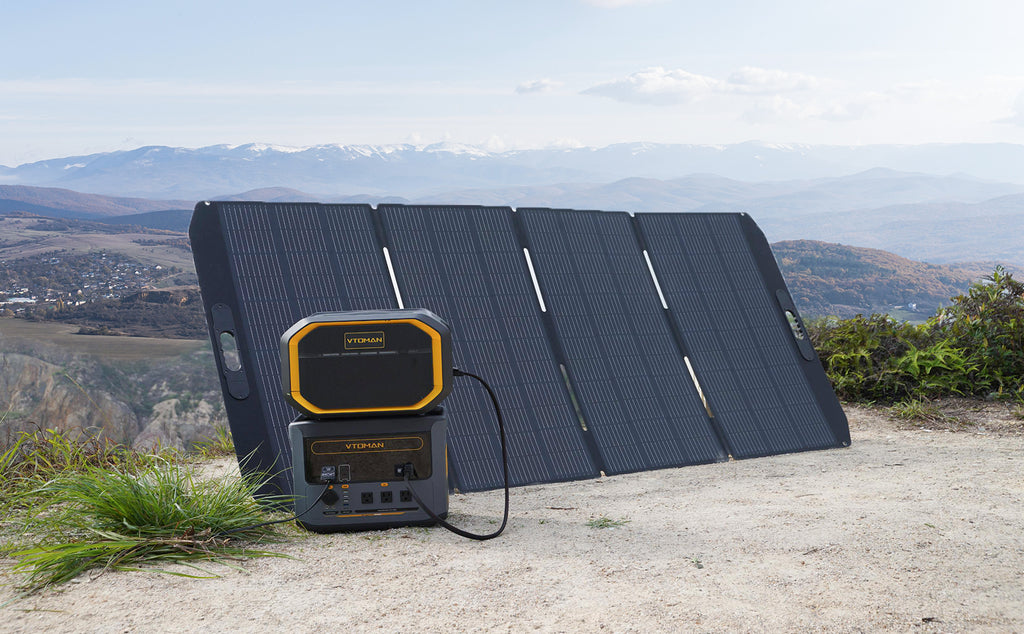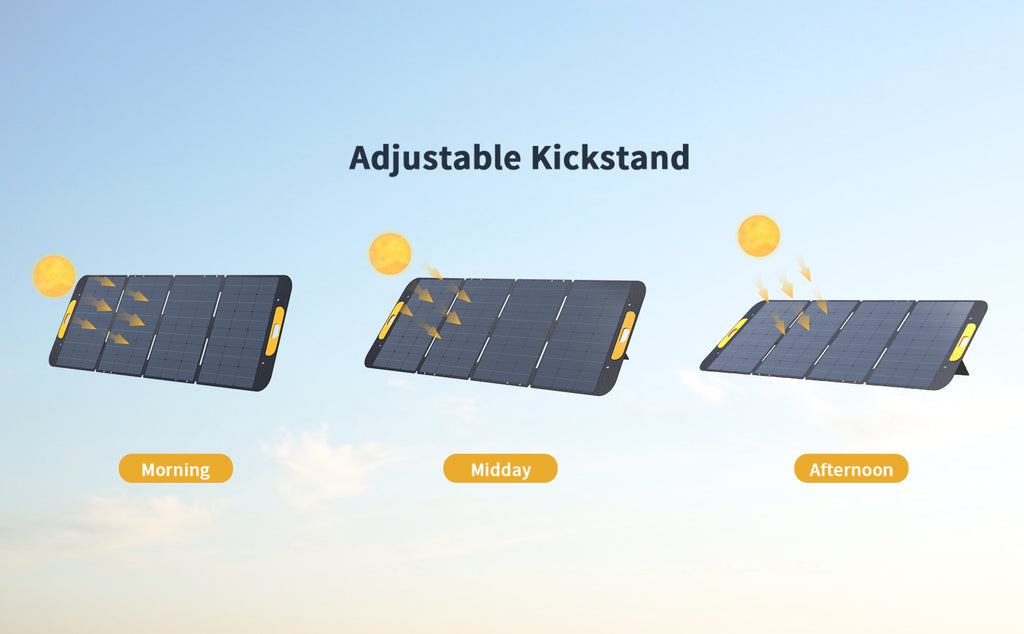Solar generators cost between $1,000 to $5,000 initially but save on fuel costs, leading to significant savings, especially as they last 20-25 years. In contrast, diesel and gasoline generators range from $300 to $10,000 and have shorter lifespans of 10,000 to 30,000 hours, incurring ongoing fuel and maintenance expenses. Over time, solar can save a household around $1,500 annually in fuel costs, with long-term savings potentially reaching $15,000 over ten years.
Interested in how we save more money using solar generators? Please read on to figure it out:
Initial Costs: Solar Generators vs. Other Generator Types
| Generator Type | Price Range | Notes |
| Solar Generators | $1,000 to $5,000 | Higher upfront cost, no fuel expenses, lower maintenance |
| Diesel Generators | $500 to $10,000 | Varies by power capacity, ongoing fuel costs |
| Gasoline Generators | $300 to $2,500 | Lower initial cost, requires regular fuel purchases |
| Natural Gas Generators | $2,000 to $10,000 | Connected to gas supply, steady fuel availability |
| Propane Generators | $500 to $6,000 | Cleaner than diesel, requires fuel storage |
The initial costs of generators can vary widely depending on the type and energy source. Solar generators, which harness sunlight to produce electricity, typically require an initial investment ranging from $1,000 to $5,000. This price range reflects the cost of the entire system, including solar panels, batteries for energy storage, and installation fees. Factors influencing the price include the system's capacity and the brand's quality and reputation.
In contrast, let's examine the upfront costs associated with other types of generators:
- Diesel Generators: Often used for high-power needs, diesel generators have initial costs ranging from $500 to $10,000. The wide price range is due to variations in power capacity and brand quality. While they may start at a lower price point for smaller models, larger, more powerful diesel generators can exceed the cost of solar generator systems.
- Gasoline Generators: Generally used for portable or emergency power, gasoline generators are typically priced between $300 and $2,500. Like diesel generators, their cost varies based on power output and quality. They are often less expensive initially than solar generators but require continuous fuel expenditure.
- Natural Gas Generators: These generators are connected to a natural gas supply and can range from $2,000 to $10,000 for residential models. The higher-end models, designed for more extensive use or larger properties, can be more expensive than solar systems but offer the convenience of a constant fuel supply.
- Propane Generators: Ranging in price from $500 to $6,000, propane generators are comparable to diesel and natural gas models. They are chosen for their cleaner burn compared to diesel but still require fuel storage and management, unlike solar generators.
While solar generators have a higher upfront cost compared to gasoline and some diesel generators, they offer significant savings over time due to the absence of fuel costs and lower maintenance requirements.

Operational Costs: Solar Generators & Other Generators
| Generator Type | Operational Costs | Maintenance Needs | Efficiency |
| Solar Generators | No fuel costs, minimal expenses | Occasional cleaning and inspection, low maintenance | High efficiency; dependent on sunlight availability |
| Diesel Generators | High fuel costs, fluctuating with market prices | Regular servicing, oil changes, higher maintenance due to moving parts | Lower efficiency; fuel-dependent |
| Gasoline Generators | Moderate to high fuel costs, dependent on usage and market prices | Frequent maintenance, oil changes, fuel management | Moderate efficiency; requires regular refueling |
| Natural Gas Generators | Variable fuel costs, generally lower than diesel | Periodic maintenance, less frequent than diesel but more than solar | Higher efficiency; dependent on continuous gas supply |
| Propane Generators | Variable fuel costs, typically higher than natural gas | Similar maintenance to gasoline and diesel generators, but cleaner burning | Moderate to high efficiency; cleaner than diesel and gasoline |
How Much Money Can You Really Save With Solar Generators as Opposed to Other Generators
When assessing the real financial benefits of solar generators compared to traditional generators, it's essential to incorporate specific data and real-world scenarios to understand the potential savings fully. Here's a detailed breakdown focusing on actual numbers:
Energy Usage and Efficiency
Consider a household with an annual energy consumption of 10,000 kWh. Using a conventional diesel generator, which might operate at an efficiency rate causing it to consume fuel worth approximately $0.15 per kWh (a typical value considering fuel prices and generator efficiency), this household would spend $1,500 annually on diesel fuel alone.
In contrast, a solar generator, after the initial setup, incurs no fuel costs. Assuming the system is sized correctly for the household's needs and there's sufficient sunlight, the solar generator could cover the same energy needs without ongoing fuel expenses. This direct comparison highlights the potential for significant savings, especially over time.
Fuel Prices and Solar Insolation
Local fuel prices can significantly affect operational costs for traditional generators. For instance, if diesel prices increase to $0.20 per kWh, the annual fuel cost for the same household would jump to $2,000. In areas with high fuel prices, the savings from switching to solar become even more pronounced.
Solar insolation varies by location; for example, a region with high solar insolation might receive an average of 5.5 hours of effective sunlight per day. This influences the efficiency of solar generators: more sunlight equals more power generation and greater savings. This geographical factor directly impacts the system's payback period.

Calculating the Break-Even Point
Using the example above, if the initial cost of a solar generator system is $4,000 and it eliminates an annual fuel expense of $1,500 (from the diesel generator), the break-even point would occur in under three years. Specifically, at 2.67 years, post which, energy generation becomes essentially free, barring maintenance costs.
Incentives and Tax Benefits
Government incentives can further enhance savings. For instance, if a 30% federal tax credit applies to the solar generator's purchase and installation cost, this would reduce the outlay from $4,000 to $2,800, thereby accelerating the break-even point to under two years based on the same annual savings.
Long-Term Savings and Price Stability
Over 10 years, the solar generator could save the household $15,000 in fuel costs (assuming diesel costs remain constant, which is unlikely). In contrast, traditional fuel costs are subject to market volatility, which can lead to even higher operational costs over time.
With a solar generator, a household consuming 10,000 kWh annually could save around $1,500 per year if replacing a diesel generator that operates at $0.15 per kWh. Assuming an initial cost of $4,000 for the solar system, the break-even point would be under three years. With government incentives, this could reduce further. Over ten years, savings could amount to $15,000, considering constant diesel prices. Thus, solar generators can offer substantial long-term savings, especially in high fuel cost areas with good sunlight availability.
How Much Electricity Bills Can Solar Generators Save?
A solar generator can substantially reduce a household's electricity bills, contingent on their average energy consumption and the local cost of electricity. For instance, if a typical household uses around 10,000 kWh per year, with prevailing electricity rates at $0.13 per kWh, their annual electricity expenses would amount to $1,300. By implementing a fully off-grid solar generator system, this household could potentially negate these costs entirely, assuming the system fully meets their energy needs and there's adequate sunlight, thereby saving $1,300 annually. If the solar system only meets half of their energy needs, the annual savings would be about $650.
Over a longer term, such as a decade, the cumulative savings become more significant. Without accounting for any increases in electricity rates, total savings could reach $13,000 for a fully off-grid solution or $6,500 for a system that covers 50% of the energy requirements. However, it's important to note that these figures could increase if electricity rates rise over time. Additionally, the actual savings depend on factors like the solar generator's efficiency and the local solar insolation levels. Hence, while initial costs for solar generators might be higher, the potential savings on electricity bills can make them a financially sound choice over time.












